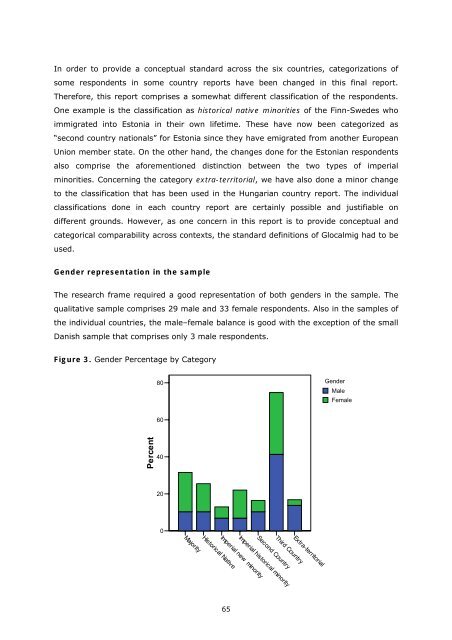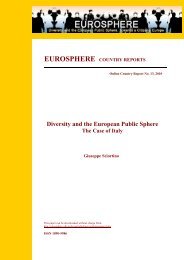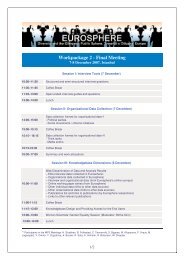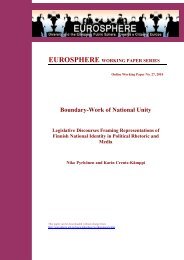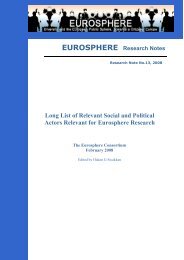Migrants, Minorities, Belongings and Citizenship. Glocalization and ...
Migrants, Minorities, Belongings and Citizenship. Glocalization and ...
Migrants, Minorities, Belongings and Citizenship. Glocalization and ...
You also want an ePaper? Increase the reach of your titles
YUMPU automatically turns print PDFs into web optimized ePapers that Google loves.
In order to provide a conceptual st<strong>and</strong>ard across the six countries, categorizations of<br />
some respondents in some country reports have been changed in this final report.<br />
Therefore, this report comprises a somewhat different classification of the respondents.<br />
One example is the classification as historical native minorities of the Finn-Swedes who<br />
immigrated into Estonia in their own lifetime. These have now been categorized as<br />
“second country nationals” for Estonia since they have emigrated from another European<br />
Union member state. On the other h<strong>and</strong>, the changes done for the Estonian respondents<br />
also comprise the aforementioned distinction between the two types of imperial<br />
minorities. Concerning the category extra-territorial, we have also done a minor change<br />
to the classification that has been used in the Hungarian country report. The individual<br />
classifications done in each country report are certainly possible <strong>and</strong> justifiable on<br />
different grounds. However, as one concern in this report is to provide conceptual <strong>and</strong><br />
categorical comparability across contexts, the st<strong>and</strong>ard definitions of Glocalmig had to be<br />
used.<br />
Gender representation in the sample<br />
The research frame required a good representation of both genders in the sample. The<br />
qualitative sample comprises 29 male <strong>and</strong> 33 female respondents. Also in the samples of<br />
the individual countries, the male–female balance is good with the exception of the small<br />
Danish sample that comprises only 3 male respondents.<br />
Figure 3. Gender Percentage by Category<br />
80 Gender<br />
Male<br />
Female<br />
60<br />
40<br />
20<br />
0<br />
65


